Today, I had the pleasure of taking a tour of the Renfrew Ravine (the last surviving ravine with a natural creek in the city of Vancouver). The tour was lead by the Still Moon Arts Society, and facilitated by Tasha Murray of the Invasive Species Council of Metro Vancouver.
Carmen Rosen, the Artistic Director of the Still Moon Arts Society, led us through some history of the ravine and showed us several art instillation created by the Still Moon Arts Society – including a beautiful stone path featuring salmon, a meditation labyrinth, and a flower dye garden. Carmen led us down a wonderful boardwalk trail which had been installed by the Vancouver Parks Board in 2018, as part of phase 1 implementation of the 2013 Renfrew Ravine and Renfrew Community Parks Master Plan. At the end of the boardwalk we reach the stump of an ancient red cedar and the beautiful Still Creek. Carmen described how the Still Moon Arts Society has organized many lantern, dance and music performances over the years, with some events taking place right in the waters of Still Creek.
Adrian Avendaño, the Stewardship Programs Manager at Still Moon Arts Society, also directed our attention to invasive plants that are within the ravine and areas that have been actively stewarded and planted. We saw massive, mature English ivy that had grown stems as thick as my arms, one of which had toppled a tree with its heavy, fruiting vines. We also saw areas with Japanese knotweed, which had escaped from a resident’s yard and into the ravine. In addition, Adrian directed our attention to a relatively new invader, giant butterbur. Native to Japan, China and Korea, this invasive forms massive leaves that shade out the native plants below it. Just where the butterbur had been actively cleared, we also saw some wonderful new native plantings, including willow, red osier dogwood, and cottonwood. Adrian proudly showed us an area of the forest that had been cleared of English ivy, and now was thriving with native salmonberry and skunk cabbage. The potential of the forest to regenerate, with the help of careful stewardship, was clearly evident.
I appreciated Still Moon Art Society members, Carmen and Adrian, taking the time to take us on such a comprehensive tour of the Renfrew Ravine. By combining art and culture with environmental stewardship, The Still Moon Arts Society, is truly creating something unique and beautiful. I look forward to attending their future workshops and events!
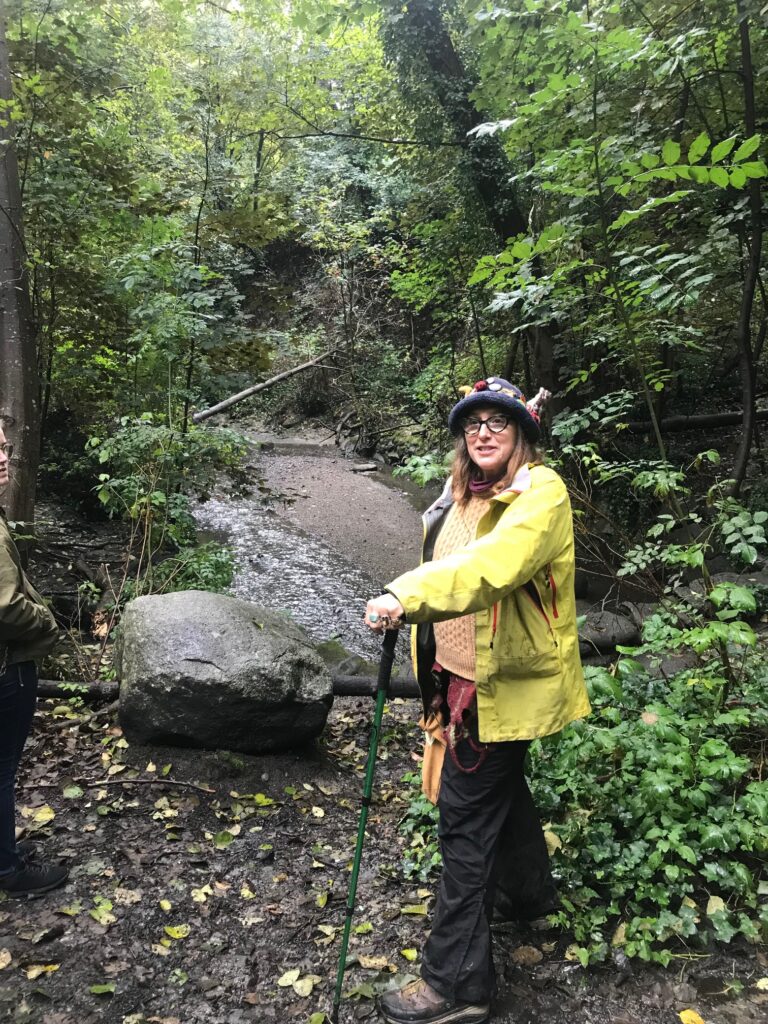
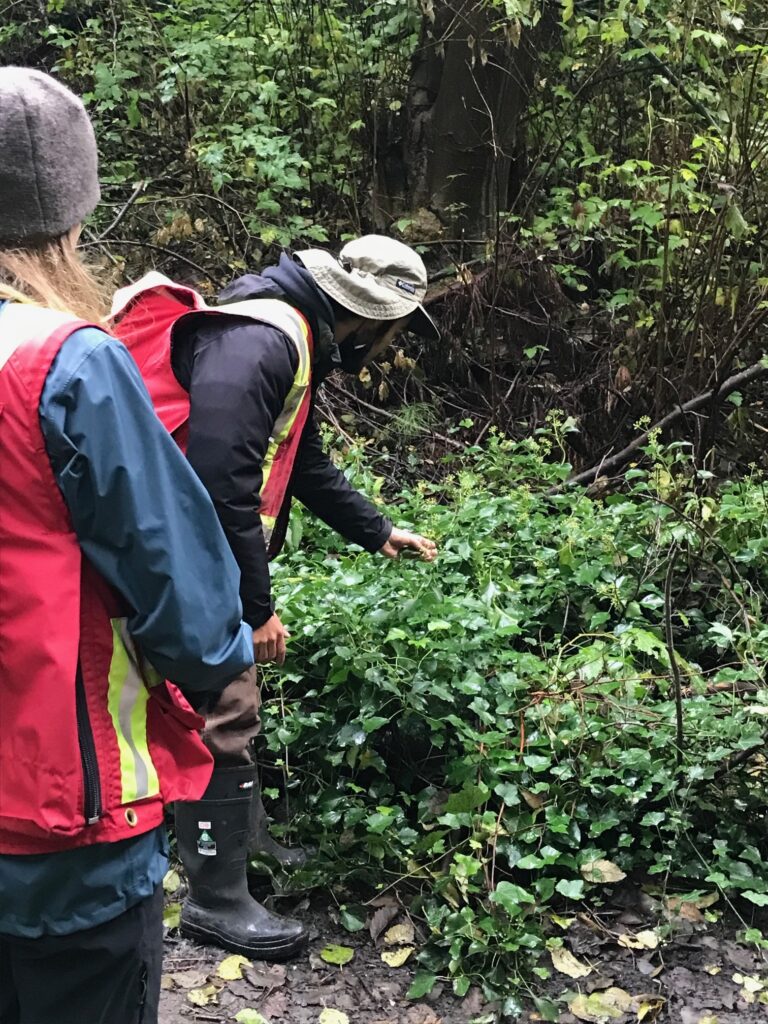
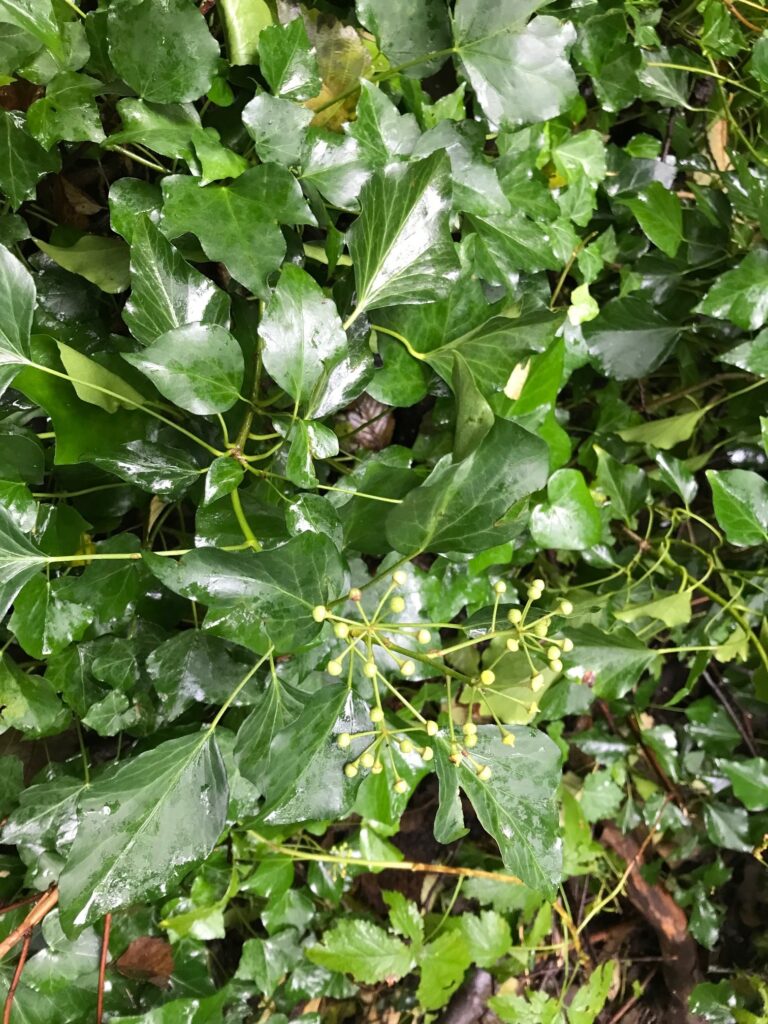
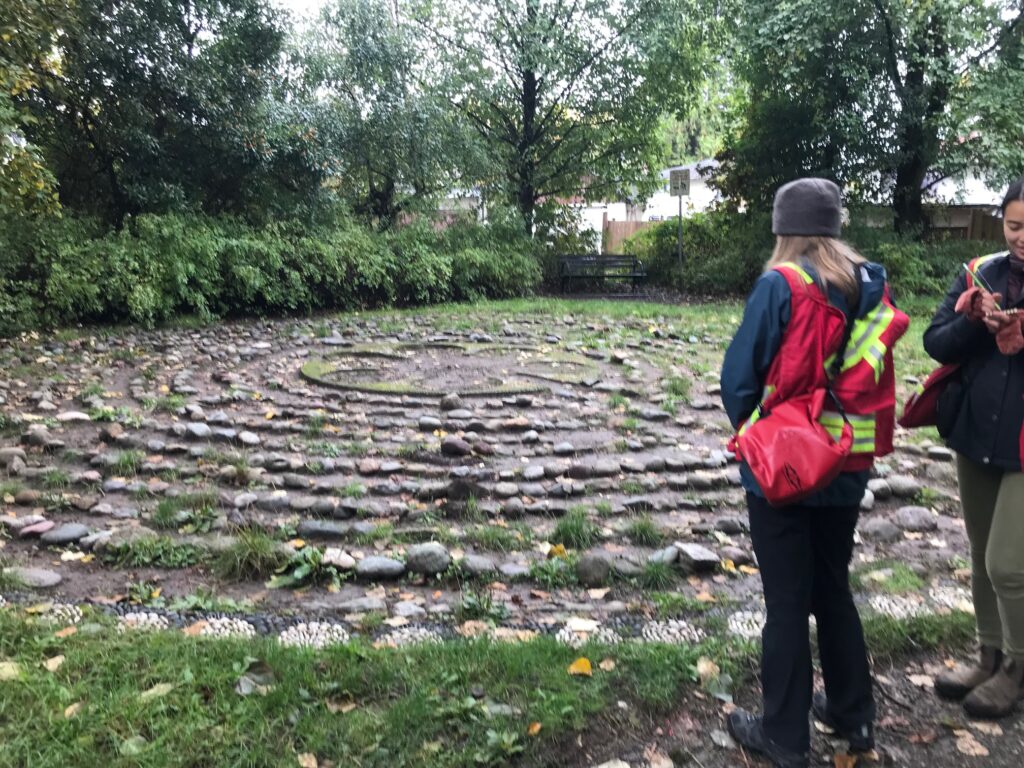
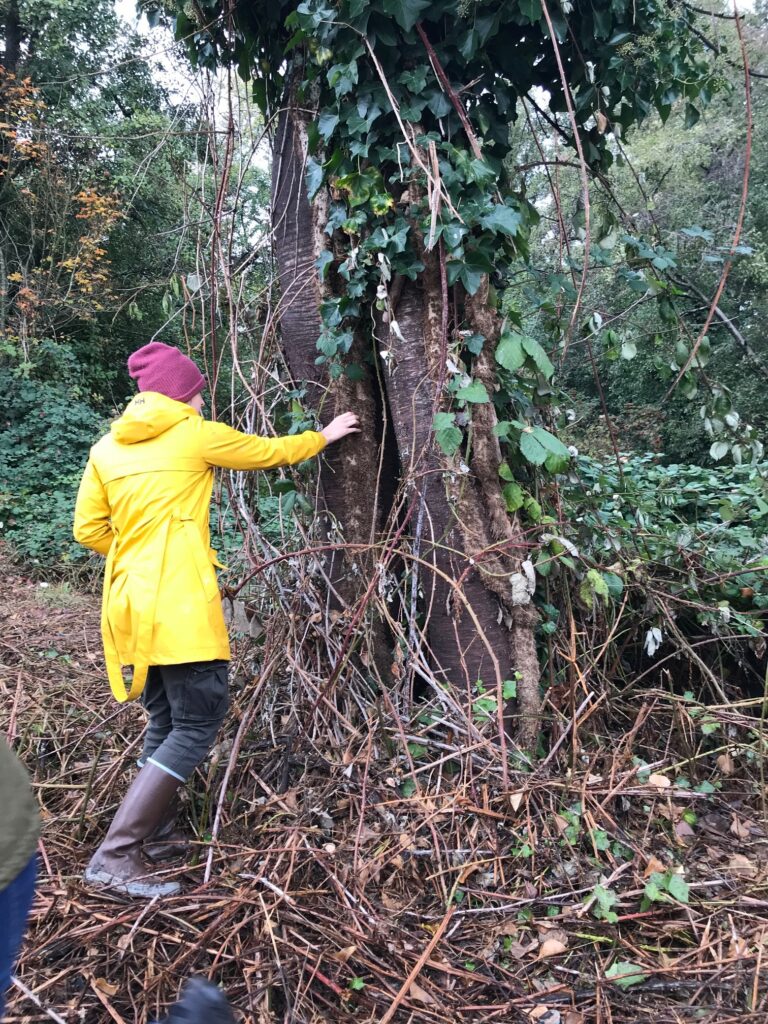
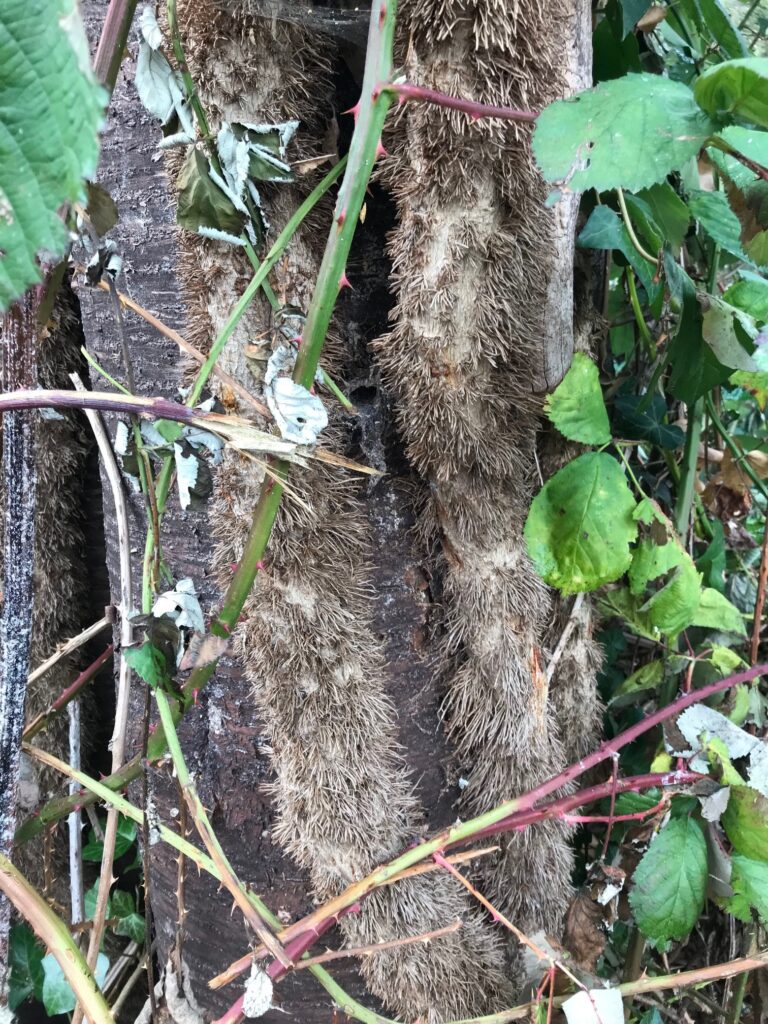
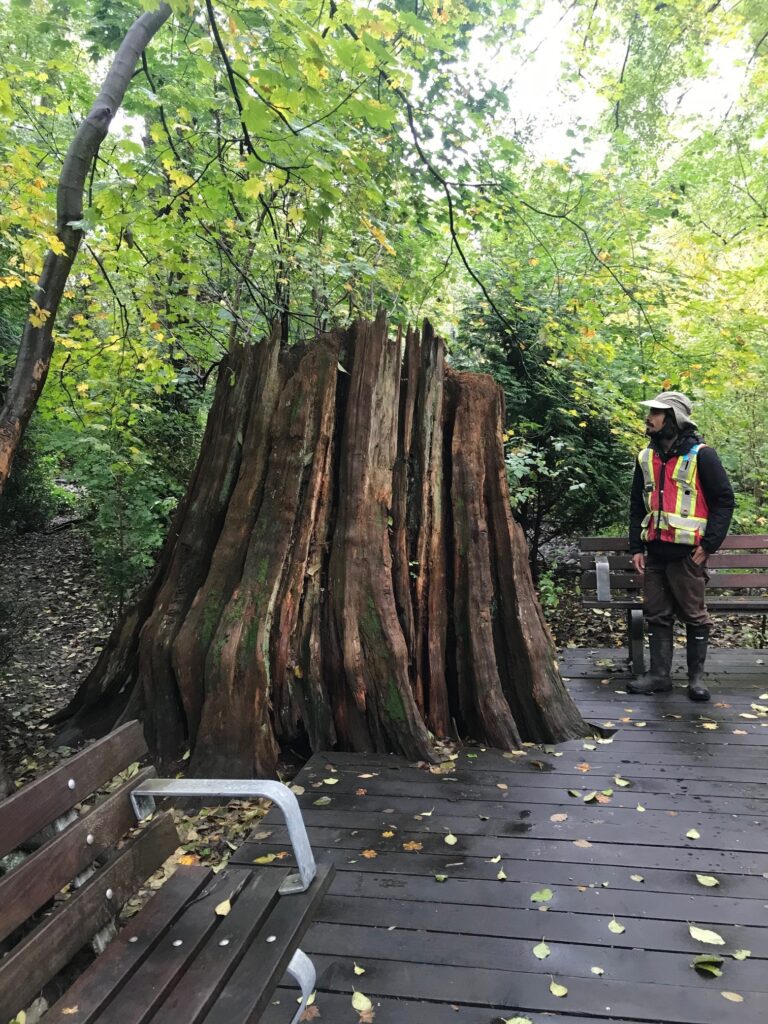
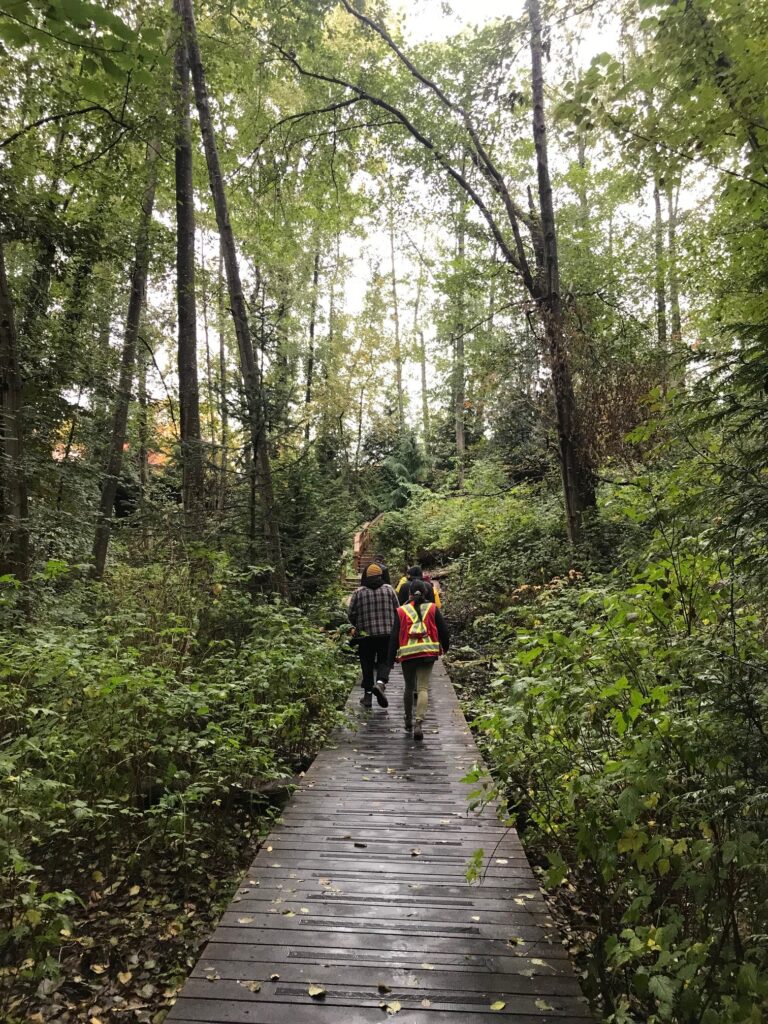
There are a few other ravines with natural creeks in the UBC area of Vancouver. I think that Renfrew Ravine was probably formed quickly, like UBC’s Campus Canyon (formed in early 1900s), but several hundred years ago, estimated by the size of the cedar stumps in the bottom near the creek. I am a retired geologist with PhD from UBC and have lived near Renfrew Ravine for 15 years. Have been involved with local groups most of that time, like Still Moon Arts Society and the greenway group that commissioned the slope stability study in Renfrew Ravine. Also helped Adrian with some of the recent planting.
Comments are closed.